Outside in the lobby –is the story of how the USA “ruined” the cotton industry in Ireland thanks to our civil war. Isn't it interesting to read someone else’s take on something? I had never thought about how our Civil War had an effect of economic proportions on another country –it was very wide spread!
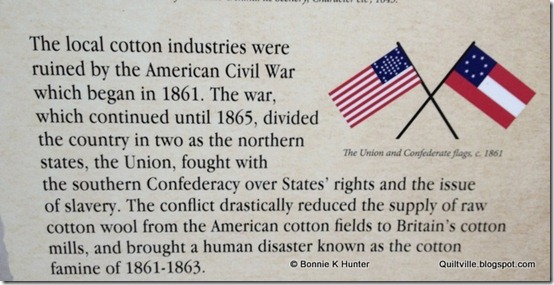
Because of the war, the raw cotton couldn't be shipped to Ireland.
Oh dear. :((
But they did have flax!
The following is from the Irish Linen Guild:
Linen is the oldest fabric known to man - it even pre-dates the invention of the wheel!
Flax in a case at the museum!Linen from the tomb of King Tutankhamen
When Pre-Historic man decided that fur and skins were no longer the height of fashion, he turned to the fibers of the flax plant to create the first ever fabric.
However, it was probably the Egyptians who first organized the industrial production of linen, recognizing it as a noble fabric - early production methods are shown on ancient hieroglyphics across Egypt. Linen became a luxury worn by royal households and other aristocracy in both life and death - around 1000 meters of fine linen would have been wrapped around Egyptian kings as part of the mummifying process.
Linen probably came to Ireland in early Christian times, and St. Patrick, the Patron Saint of Ireland, is said to be buried in a shroud of Irish Linen. The production of Irish Linen continued through the Middle Ages, but it was not until the 17th Century that the industry started to develop in any structured way, initially under the guidance of the Earl of Stafford and the Duke of Ormonde.
Museum display of a maid in linen dress surrounded by flax.
In the late 17th Century, the Huguenots, who had recently fled from France to Ireland, added their expert textile skills to the already well-established Irish Linen industry, and the fame and reputation of Irish Linen flourished.
The industry was concentrated in the north of Ireland, particularly in the area of land between the two great rivers of the north, the Bann and the Lagan. This area is known today as The Linen Homelands.
Our guide, unraveling the linen fiber from the outside of the stem.
Linen was the focus for the Industrial Revolution in the north of Ireland, with the Province's engineering, trade and infrastructure developed around the requirements of the industry. In the 20th Century, linen played a vital role in both World Wars. Rope, net, twine, hosepipes, sailcloth, canvas, blackout sheets, tents and airplane wing sealants were all made from Irish Linen. After World War Two, synthetic fibers replaced linen in many of these heavy industrial products.
Flax seeds
Uncombed linen fiber
Combed fiber!
Have you ever read about a girl with “flaxen hair?” This is where the description got its name!
Once the fiber has been combed and made ready, it is ready to spin into yarn. Here is a video of one of our guides spinning away!
We even got a chance to try to spin ourselves!
Celine giving it a go!
Yes, I tried too! Anything with a treadle on it is fair game for me!
((Pardon the windy rainy bad hair day!))
It’s amazing what other info you can find online when you search --- there is a virtual tour of the museum found here:
Click HERE to view the Musuem Tour!
It was an amazing eye opener – not only to think of having to sew by hand in the early days – but to MAKE YOUR FABRIC too?! I love the study of history, but am so happy to have one foot in the modern world as well!
From here our bus took us into Belfast ---more on that to come!
I’m back home in North Carolina – a good night’s sleep and I’m feeling somewhat normal. There is a lot of book work and computer work to take care of today ---there will not be sewing time for at least a couple of days. I’m thinking Quilt Cam may happen on Wednesday night, 9pm eastern, but I will let you know for sure. I need a couple days to get back into the swing of things and catch up after being gone 13 days.
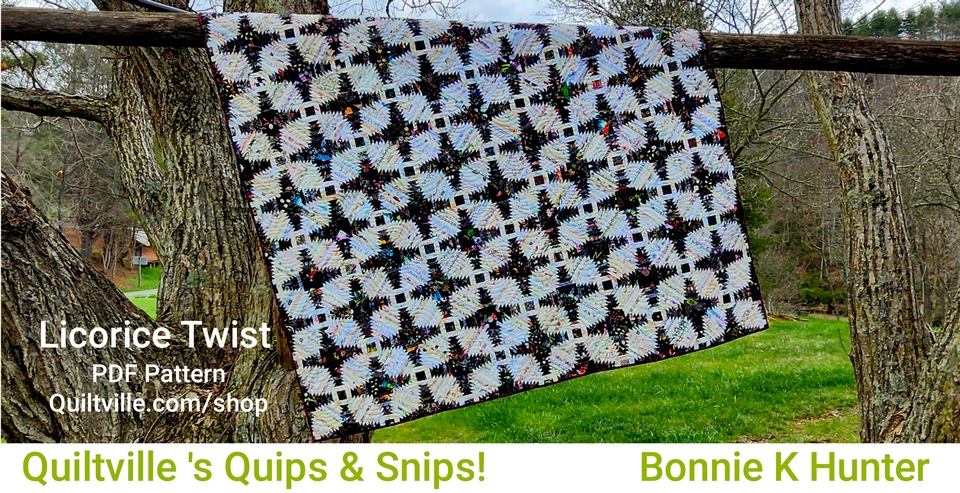

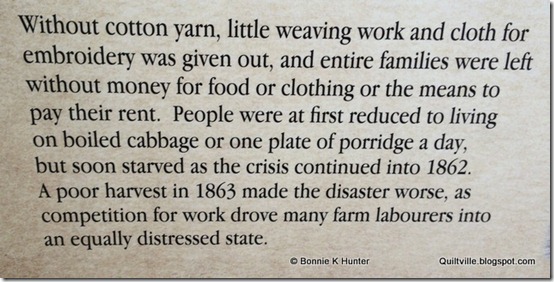
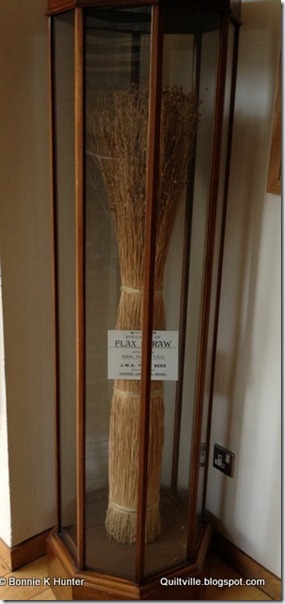

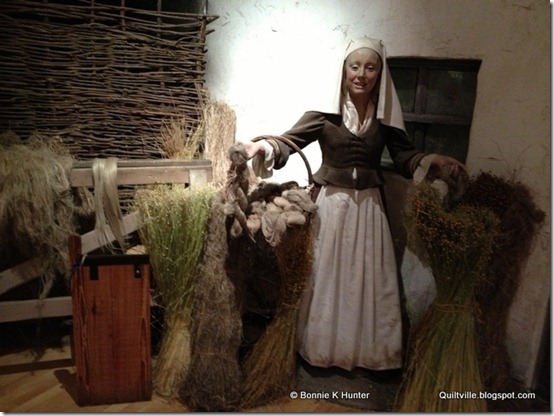
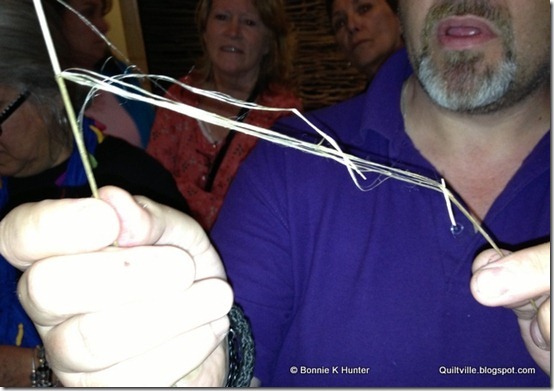
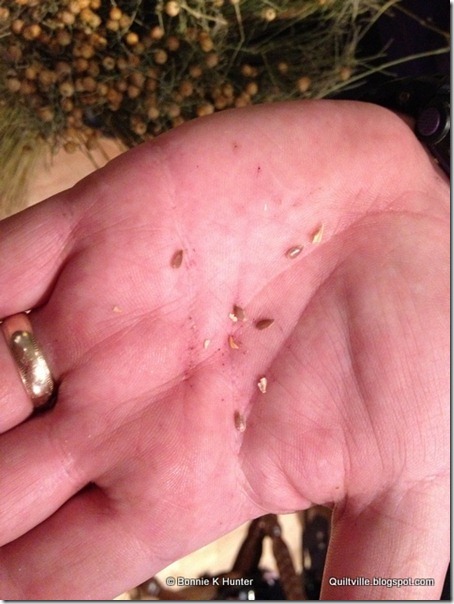
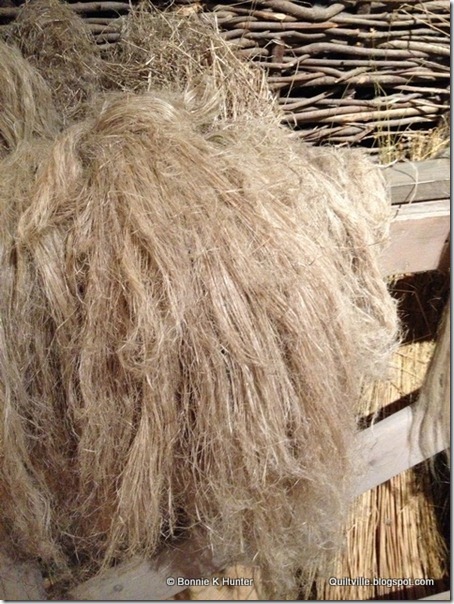


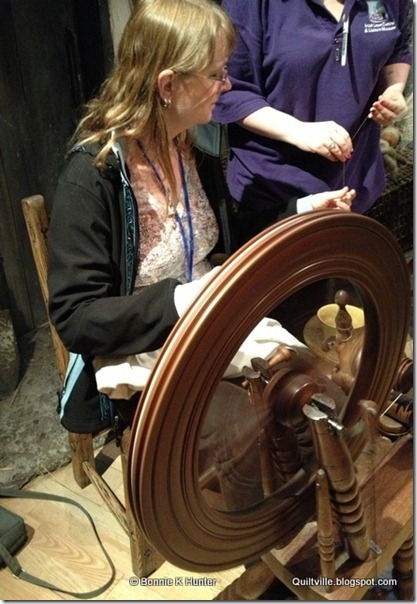

Glad to hear your home safe Bonnie. I love your blog as it's always so interesting and informative to read. My armchair holiday in Ireland has been amazing. Thank you.
ReplyDeleteWelcome home...seeing your vacation through your eyes(camera lens) was great. It is always a double edged sword coming home...glad to be back but then there is all that catching up on things.
ReplyDeletethanks for sharing. I had just finished a book about the blockade runners trying to get cotton to England - amazing how our industry in the 1800's had to do with starving people in Ireland
ReplyDeleteWhat an interesting visit for you! Thanks for sharing so much of what you learned with us! Hoping you are ready for quilt cam by Wednesday... I am having dt's without your scrappy style in my life! lol Kathi
ReplyDeleteHello Bonnie,
ReplyDeleteWhat a fascinating museum! You must have really enjoyed having a go at spinning.
You have prompted me to post a little bit of linen history on my blog today
http://lizzielenard-vintagesewing.blogspot.co.uk/2013/06/linen-frocks-made-to-measure.html
Hope you enjoy it!
Looking forward to your post on Belfast.
Love,
Muv
Did you know that when Princess Ann was born a bale of cotton was sent from the Rio Grande Valley to make her cloth diapers? Old legend.
ReplyDeleteWelcome home, and thank you for the tour of Ireland that you've been feeding to us :) I marveled at reading how the cotton industry affected Ireland during the Civil War. We often forget how wars or famines can have far-reaching consequences. I once had a horse with a flaxen mane & tail - so that was interesting to learn too about how flax is combed and hence the 'flaxen' reference to hair - learning new things every day!
ReplyDeleteis thursday a possibility?
ReplyDeleteLoved the spinning video, I actually have that exact spinning wheel. Imagine my surprise. However, I do not know how to spin.
ReplyDeletewelcome home.take your time getting reaclimated. im thrilled i was able to see Ireland through your eyes.
ReplyDeletesara
Fascinating stuff, Bonnie!
ReplyDeleteI've really enjoyed your trip thru Ireland - brought back memories of my trip there nine years ago. Looking forward to meeting you and taking a class in Monroe, LA later this month.
ReplyDeleteAs I was scrolling down your post I noticed how pretty and shiny your hair looked before I recognized it was you. No need to apologize for it at all!
ReplyDeleteYou ARE the girl with flaxen hair :-) .
The Civil War's effect on cotton quilting was amazing. In 1863 in the northern states where textile mills were prevalent, 3 yards of cotton backing sold for about 75 cents, and 6 yards for a top sold for about 36 cents per yard. However, in the South, were there were no textile mills, calico was selling for as much as $25.00 a yard. Needless to say, there was not much quilting go on in the South during those years. And we think prices are high now!!! :)
ReplyDeleteAre you going to get a spinning wheel now? I have a couple. Wool is much easier to spin than linen. Cotton too. But then you would need to start knitting or weaving too.
ReplyDeleteИнтересное путешествие. Много впечатлений.
ReplyDeleteHi Bonnie sounds like you had a wonderful trip. My husband's grandfather had a linen farm in Ireland called Linen Hill but it failed after Second World War .
ReplyDeleteBonnie, this sounded so interesting-thank you
ReplyDelete